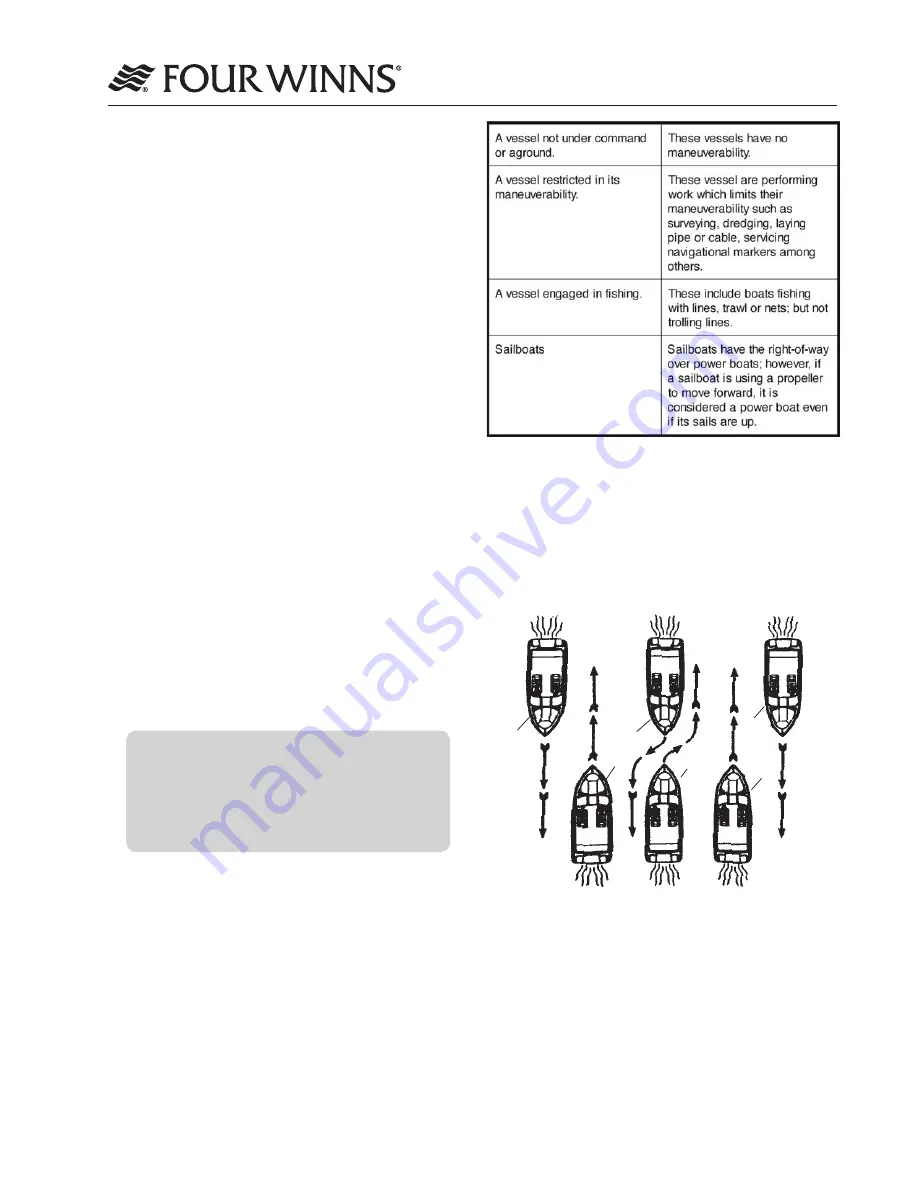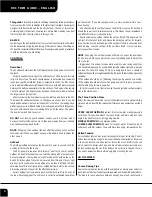
Owner’s Manual Page 41
Basic Seamanship - Section C
2. Meeting Head-On
When two boats meet head-on neither boat has right-
of-way. Both boats should decrease speed and pass;
port to port. However, if both boats are on the left
side of a channel, each vessel should sound two
short horn blasts and pass to starboard to starboard.
See Figure C-1.
Figure C-1: Meeting Head-On
3. Crossing Situations
In a crossing situation, the boat on the right from
the 12-4 o’clock position has the right-of-way. It must
hold course and speed. The boat without the right-
of-way must keep clear and pass to the stern.
See Figure C-2.
C - 1 GENERAL
Basic rules of seamanship, general information about
navigational aids, and sources for additional reading
and boater education are presented in this portion of
your owner’s manual.
A. Boating Regulations
The US Coast Guard is the authority of the waterways.
State boating regulations are enforced by local authori-
ties. Your boat is subject to the marine traffic laws
known as “Rules of the Road,” which are enforced by
the US Coast Guard. You are subject to marine traffic
laws and “Rules of the Road” for both federal and state
waterways; you must stop if signaled to do so by
enforcement officers, and permit them to board if
asked. The “Navigational Rules, International-Inland
Rules of the Road” can be obtained from the US Coast
Guard website at www.uscgboating.org.
Many pamphlets prepared by the US Coast Guard are
available. They explain signal lights, buoys, safety,
international and inland regulations and other informa-
tion which goes beyond the scope of this manual. “Aids
to Navigation” (US Coast Guard pamphlet #123)
explains the significance of various lights and buoys.
Because of proposed alterations to buoys and markers,
contact the US Coast Guard or visit their website to
stay informed of changes. Other pamphlets, including
the “Boating Safety Training Manual” and “Federal
Requirements For Recreational Boats,” are also
available from the US Coast Guard.
NOTICE
The spoken word “MAYDAY” is the
international signal for distress. “MAYDAY”
should NEVER be used unless there is grave
or imminent danger, and you are in need
of immediate assistance.
B. Rules of Seamanship
1. Right-of-way
In general, boats with less maneuverability have
right-of-way over a more agile craft. You must stay out
of the way of the following vessels:
Basic Seamanship
Honk
Honk
Honk
Honk
Honk
Honk
Honk
Honk
Summary of Contents for V458
Page 1: ...V 4 5 8 O W N E R S M A N U A L 0 9 0 2 8 8 6 ...
Page 2: ......
Page 4: ...Table of Contents Owner s Manual Page 1 Table of Contents ...
Page 5: ...Owner s Manual Page 2 Table of Contents ...
Page 6: ...Table of Contents Owner s Manual Page 3 ...
Page 7: ...Owner s Manual Page 4 Table of Contents ...
Page 8: ...Table of Contents Owner s Manual Page 5 ...
Page 9: ...Owner s Manual Page 6 Table of Contents ...
Page 10: ...Table of Contents Owner s Manual Page 7 ...
Page 11: ...Owner s Manual Page 8 Table of Contents ...
Page 52: ...Owner s Manual Page 50 Warranty and Service Section D ...
Page 54: ...Owner s Manual Page 52 Warranty and Service Section D ...
Page 94: ...Owner s Manual Page 92 Fuel Systems Section I Figure I9 Fuel Valve System Components ...
Page 171: ...Owner s Manual Page 169 Pre Launch and Underway Section S Figure S3 Mooring Lines ...
Page 188: ......
Page 189: ...www fourwinns com ...
















































